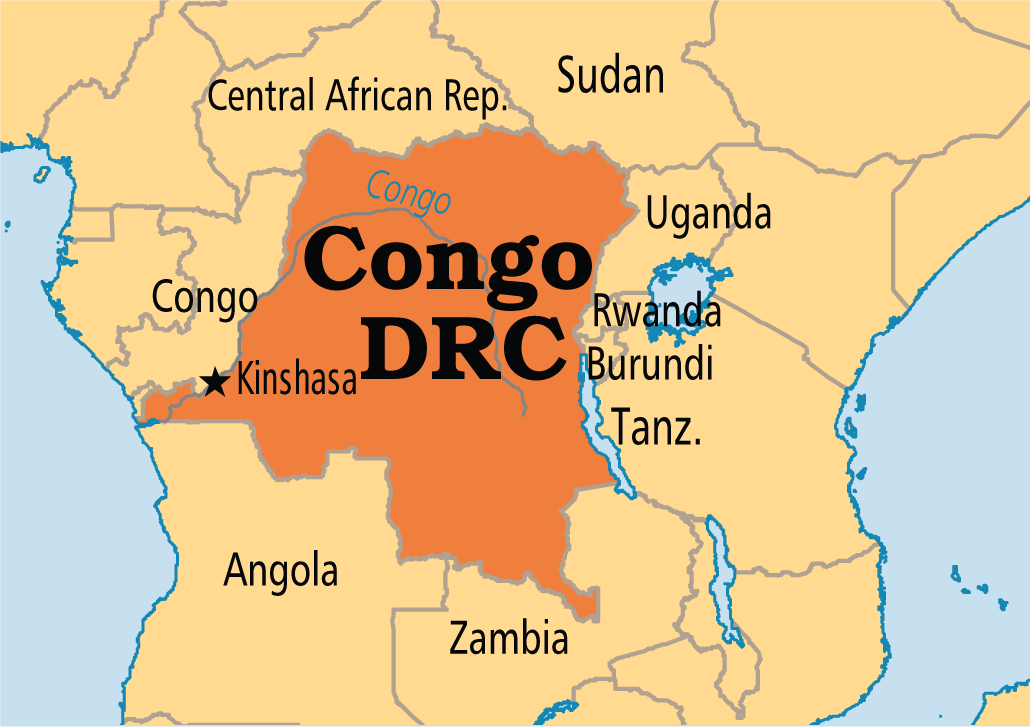International Relations
Ebola Death in Democratic Republic of Congo
- 13 Apr 2020
- 4 min read
Why in News
According to the World Health Organization (WHO), the Democratic Republic of Congo recorded a second Ebola death in days following more than seven weeks without a new case.
Key Points
- The Ebola outbreak has killed more than 2,200 people since August 2018. During this outbreak it killed about two thirds of those it infected.
- The cases appear when the Democratic Republic of Congo had been due to mark an end to the second-deadliest outbreak of the virus on record.
- No clarity on contractions: It is not yet clear how the new cases emerged. Neither there was any contact with other Ebola patients, nor the patient was a survivor of the virus which could have relapsed.
- Flare-ups or one-off transmissions (sudden outburst) are common towards the end of Ebola outbreaks, and a new case does not necessarily mean that the virus will spread out of control again.
Ebola Virus Disease
- Ebola virus disease, formerly known as Ebola haemorrhagic fever was first discovered in 1976 near the Ebola River in what is now the Democratic Republic of Congo. Since then, the virus has been infecting people from time to time, leading to outbreaks in several African countries.
- Transmission: Fruit bats of the Pteropodidae family are natural Ebola virus hosts.
- Animal to human transmission: Ebola is introduced into the human population through close contact with the blood, secretions, organs or other bodily fluids of infected animals such as fruit bats, chimpanzees, gorillas, monkeys, forest antelope or porcupines found ill or dead or in the rainforest.
- Human-to-human transmission: Ebola spreads via direct contact (through broken skin or mucous membranes) with:
- Blood or body fluids of a person who is sick with or has died from Ebola.
- Objects that have been contaminated with body fluids (like blood, feces, vomit) from a person sick with Ebola or the body of a person who died from Ebola.
- Incubation Period: The incubation period, that is, the time interval from infection with the virus to onset of symptoms, is from 2 to 21 days.
- A person infected with Ebola cannot spread the disease until they develop symptoms.
- Symptoms: Symptoms of Ebola can be sudden and include:
- Fever
- Fatigue
- Muscle pain
- Headache
- Sore throat
- Vomiting
- Diarrhoea
- Symptoms of impaired kidney and liver function
- In some cases, both internal and external bleeding
- Diagnosis: It can be difficult to clinically distinguish Ebola from other infectious diseases such as malaria, typhoid fever, and meningitis but confirmation that symptoms are caused by Ebola virus infection are made using the following diagnostic methods:
- Antibody-capture Enzyme-linked Immunosorbent Assay (ELISA). It also tests Acute Encephalitis Syndrome and Kyasanur Forest Disease.
- Antigen-capture detection tests
- Serum neutralization test
- Reverse Transcriptase Polymerase Chain Reaction (RT-PCR) assay
- Electron microscopy
- Virus isolation by cell culture.
- Vaccines: An experimental Ebola vaccine, called rVSV-ZEBOV proved highly protective against EVD in a major trial in Guinea in 2015.
- The rVSV-ZEBOV vaccine is being used in the ongoing 2018-2019 Ebola outbreak in DRC. Pregnant and breastfeeding women should have access to the vaccine under the same conditions as for the general population.
- The public mistrust and militia attacks have prevented health workers from reaching some hard-hit areas for administering the vaccines.




